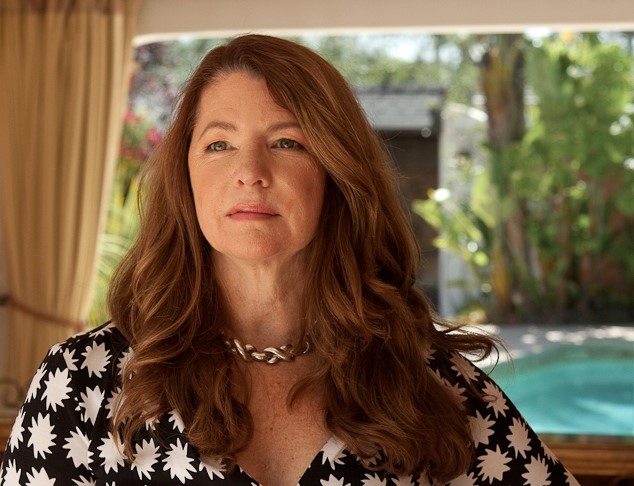Exhibitions Return in Hybrid Form
Peter White, CEO, IABM
“Expect to see sustained growth in DTC following the massive boost in VOD viewing and subscriptions during lockdown. Disney has announced that it is aiming to grow from its current base of 87m subscribers to 300m+ by 2024 and broadcasters continue to roll out new SVOD services — Discovery+ has just gone live, for example. How will consumers make sense of the explosion of choice? The answers may lie in the super-aggregator with a single interface as well as the technology to enable a truly personalized experience.

Big sporting events will be back, but will leverage much more remote production — building on what the industry has learned during the pandemic. This will give broadcast advertising revenues — hit by 20-40% this year — a kick in the right direction again. While they may never return to previous levels, broadcasters who also have VOD and streaming offerings will have the opportunity to cross-sell between platforms — a luxury big-tech players do not yet have. Behind this, ad tech will increase in prominence in 2021, with big companies bringing it in-house to give them more control and increase their differentiation, using ML to place ads contextually.
On the tech supply side of the industry, IABM research finds vendors optimistic that sales will recover in 2021 — though not necessarily with all the same technologies as the industry moves increasingly into the cloud and SaaS business/operating models.
What will also be back at some time in 2021 is exhibitions. All of IABM’s research clearly shows that while virtual events have provided some benefits, the need for face-to-face interactions has not gone away. That doesn’t mean things will return to how they were pre-COVID — events will take on board the best of virtual alongside the in-person element to provide a hybrid experience — with virtual contributions going both in and out of the event hub.”
DTC Everything, Data Compliance Priority and Entertainment at Your Fingertips
Jennifer Cooper, Director Business Strategy, Media and Entertainment, Microsoft
2020 was definitely the year of direct to consumer — everything from DTC streaming services to DTC e-commerce and DTC t-commerce. Now that media brands are interacting with consumers directly they need to have the intelligence for how best to serve their communities, so the trend that will continue into 2021 and beyond will be data driven audience intelligence.

2021 is also the year of the digital event. There have been no live experiences for most of 2020 and this will continue for much of 2021. Many experiences that we used to travel to will remain virtual. The media technology industry has mobilized to support these digital events with innovations such as low latency delivery from the network edge.
An example takes place in two weeks when Microsoft Azure partners with Consumer Technology Association and MediaKind to bring the industry direct to consumers for digital CES 2021.
Second, I see the impact of 5G continuing to support and evolve new consumer experiences the telcos are stepping up to the challenge. Connectivity and 5G in 2021 and beyond will bring more AR/VR, more gaming and new entertainment to the fingertips of your hand. Lower latency, superior quality video will permeate throughout every technology consideration.
The third related trend is concern for personalized data. Just as everything is shifting DTC and the focus shifts to audience intelligence so the privacy and security of consumer data and compliance with data security laws will become even more important. The pandemic required all of us to share more of our data from financial to health care data. Every video streamer, studio, media organization, broadcaster, publisher, ad agency — every company — will be laser focused on keeping consumer data safe. It is the technology foundation for the media industry into 2021.
SVOD and Pay TV Are Merging
Tristan Veale, Head of Video Content Research Team, Futuresource Consulting
“By the end of 2020, worldwide SVOD spend is set to reach $55 billion, with Netflix capturing almost half of all global value. It’s inevitable that SVOD will continue to power the growth curve. By 2024, we expect over a third of home entertainment spend will be on SVOD.

That said, pay-TV subscription revenue dominates the market globally, accounting for $172 billion in consumer spending worldwide in 2020 and 70% of total global home video spend across pay-TV, SVOD, TVoD, EST, DVD and Blu-ray.
While the SVOD services have developed a business model which suits modern living, there remains value in the linear model, with the vast majority of content spend directed that way. Is there a way to combine the two?
SVOD services certainly believe so. They are experimenting with scheduling and acquiring sports rights — two key pillars of the pay-TV industry. The aim is to improve visibility on distribution platforms, including fitting in with current EPGs on legacy infrastructure, while still retaining the consumers ability to start from the beginning of the program if they wish. Thinking about the customer journey, the first challenge is to entice them to the app or service, with the second challenge being to make it easy to find the right content. Whichever service can make that journey easier will have a competitive advantage.”
Paid and Free Are No Longer the Only Business Models in Town
Stuart Boorn, VP Product Management, MediaKind

“Streaming TV now has more in common with direct-to-consumer experiences than traditional pay-TV, as rights holders increasingly look to deliver more personalized viewing experiences on flexible and scalable platforms. ‘Paid’ and ‘free’ are no longer the only two business models for media content. The burgeoning DTC market suggests a more complex picture with various underlying models and multiple variations, including free to access, subscription, ‘freemium,’ and companion services. Operators and service providers are likely to adopt one or a hybrid of these models going into the new year.
We expect a wholesale shift to streaming as a means of offsetting the impact of cord-cutting, as well as a way of introducing unique and compelling content to consumers under one aggregated platform. This investment will ultimately help operators diversify their offerings, deliver modern TV services, and open up new monetization routes.”
Streaming TV to Rescue Theatrical
Loren Nielsen, VP Content & Strategy DTS Inc/Xperi
“It’s been a disastrous year for theatrical. We’ve seen China, South Korea Japan able to keep their cinemas open successfully with the box office getting close to pre-pandemic levels but in the western world theatrical is in total turmoil. A lot of theatres will close as content owners have taken this time to accelerate streaming first strategies.

From the viewpoint of artists, though, I’d argue this is a good thing. Over the last few years, a number of very high profile filmmakers have made some of their best content for streaming services in a way that’s reminiscent of the 1970s American new wave. The auteur freedom that filmmakers like Martin Scorsese enjoyed then is happening once more. In order to get access to these kind of filmmakers, streaming platforms have given them artistic freedom and the budgets to create exciting new feature and episodic content. As the SVOD platforms multiply, there will be increased opportunity for more filmmakers with the freedom to make exciting new content, and ultimately, more choice for consumers.
Theatrical presentation will always have a place but it may be those providing the X factor of a special experience or those that provide a community service of some kind which will thrive.
At the same time, I believe filmmakers working for streaming services will also want to take advantage of seeing their work on the big screen. We’ll even see episodic content premiering in theatres, as a marketing tactic but also as special events for super fans of a show. The distribution business model will be different but there will be room for more of this activity.”
Video and Storytelling Need to Incorporate Social Experiences
Jonathan Lupo, Head of Digital Experience Design, North America, EPAM
“Our need to socialize has been repressed for approximately seven months now, and we’re absolutely starving for meaningful social experiences. Just adding a chat or commenting feature into an eCommerce app won’t give us the virtual hugs we desperately crave.

Streaming services such as Netflix, Disney+, Hulu, Amazon Prime Video, HBO Max, and YouTube TV haven’t been able to replicate the theater-going experience. While drive-in movies have been making a come-back in small communities, there’s certainly an opportunity for digital streaming giants to make their content more social.
Efforts, to date, include the ability to schedule Netflix ‘watch parties’ Netflix which synchronize video playback with a group of watchers who can chat with each other during a movie or TV show. The ability to chat is a rudimentary social capability, however, and without seeing your friends, the experience feels somewhat disembodied.
Necessity being the mother of invention, digital media consumers have found a way to ‘hack’ popular teleconferencing software, like Zoom to create DIY watch parties with the ability to actually glimpse their friends’ faces. Streaming content providers will likely follow suit, bringing more embodied social entertainment to screens in 2021.
Deloitte claims that “there are more millennials, now, who have a gaming subscription than those with a traditional Pay TV subscription — and close to one-half of millennials and Gen Z pay for both a gaming and video streaming service.”
Animal Crossing was a huge hit this year in part because it provided an alternative avenue for social connection and interaction — a sort of digital ‘third place,’ more geared towards casual togetherness or hanging out than the purpose-driven and performative mechanics of conferencing software like Zoom.
Since gaming is inherently social, and given the crossover consumer base, it makes sense for movie studios and gaming platforms to join forces and create mixed-media experiences that enable consumers a greater degree of social interaction, engagement with franchises, and escape from reality. With VR now within the consumer’s grasp, a properly immersive, mixed-media experience could both entertain us and help satisfy that urge to be social, in a real physical sense.”
Real-Time Streaming Makes the Viewing Experience More Interactive and Personalized
Steve Miller-Jones, VP Edge Computing and Solutions Architecture, Limelight Networks

“Younger generations especially are gravitating towards short-form content and real-time, data-intensive OTT services. They are beginning to expect more interactive experiences from their content, and that means larger data volumes and more pressure to reduce latency. The next generation of viewers won’t just consume real-time content, more and more they’ll interact with it.
One area where this will be really prevalent is live sports. As sporting events returned to our screens this summer, several broadcasters experimented with new virtual offerings to make the real-time streaming experience more engaging. This experimentation will only increase in 2021. We can expect gambling integration and personalized services that provide alternative commentaries, live audio feeds from the referee’s mic, and crowd sounds for an authentic stadium experience. We will also see more features focused on social streaming, allowing friends to watch together. These features might be short-lived, but those that really engage audiences will remain and change how live streaming experiences are defined. We’re not there yet, but we’re approaching a model where the user controls the content experience for themselves.”
Streaming Services Want the Power of Linear TV
Nick Thexton, CTO, Synamedia

“OTT subscriber numbers that previously took years to achieve have been reached in months. But as we return to a new kind of normal there will be a real challenge to keep those subscribers, particularly because they will have consumed content at a higher rate than that modelled by the OTT vendors. Add to this a slowdown in content creation and there will be a significant push to keep those new subscribers. As a result, in 2021 we expect to see operators launching flexible pricing structures and new business models as they look to establish differentiators for their services.
2020 saw a challenging advertising market and surfaced the need for new, more robust advertising capabilities. Collaboration will be key to unlocking new advertising revenues and we believe that in 2021 we will see the first examples of localized advertisers, broadcasters and service providers starting to work together to prove the value of the addressable model.
For years we have seen how pay-TV providers look enviously at streaming services and work hard to emulate their offerings. Now the tables are starting to turn. As subscriber growth slows, streaming services are looking enviously at the power of linear TV. While Amazon Prime has experimented with live sports and some French audiences have had access to a pilot curated channel, Netflix Direct, we expect to see other streaming providers following their lead over the next few years.”
SVODs Need to Know Their Customers Better
Kevin Westcott, Vice Chairman and US Technology, Media & Telecommunications Leader, Deloitte LLP

“One big trend shaping media and entertainment is the changing role of movies. Studios and streaming services are thinking more strategically about when and where to release new movies. The pandemic has accelerated a shift to releasing new movies on streaming services, both as a way for studios to reach audiences staying at home and for streaming services to potentially add or retain subscribers with premium first-run offerings. The challenge is that studios make a lot of money on theatrical revenues and the entire release windowing system could be disrupted by going direct to streaming.
The second big trend is the maturing streaming video market. There are more paid streaming video services competing to attract and retain subscribers. With so many options, consumers are adding and cancelling services, signing up to watch a trending new series or movie and then dropping the service when they’re done. More are balancing costs and content with free ad-supported offerings. To retain more subscribers, paid streaming video services may need to get to know them better in order to deliver experiences that make them feel more like members of club.”



Nice article. Good insights here.